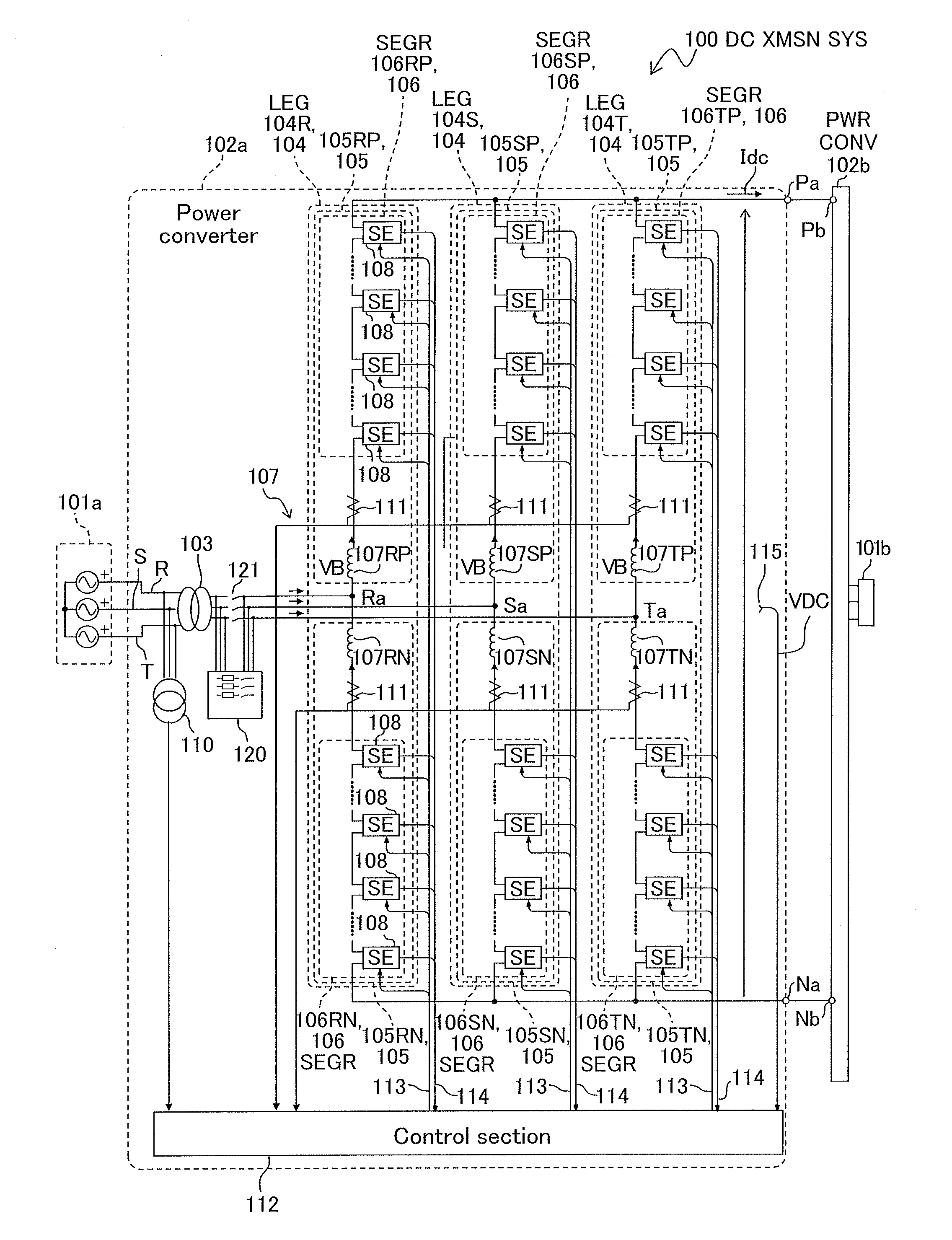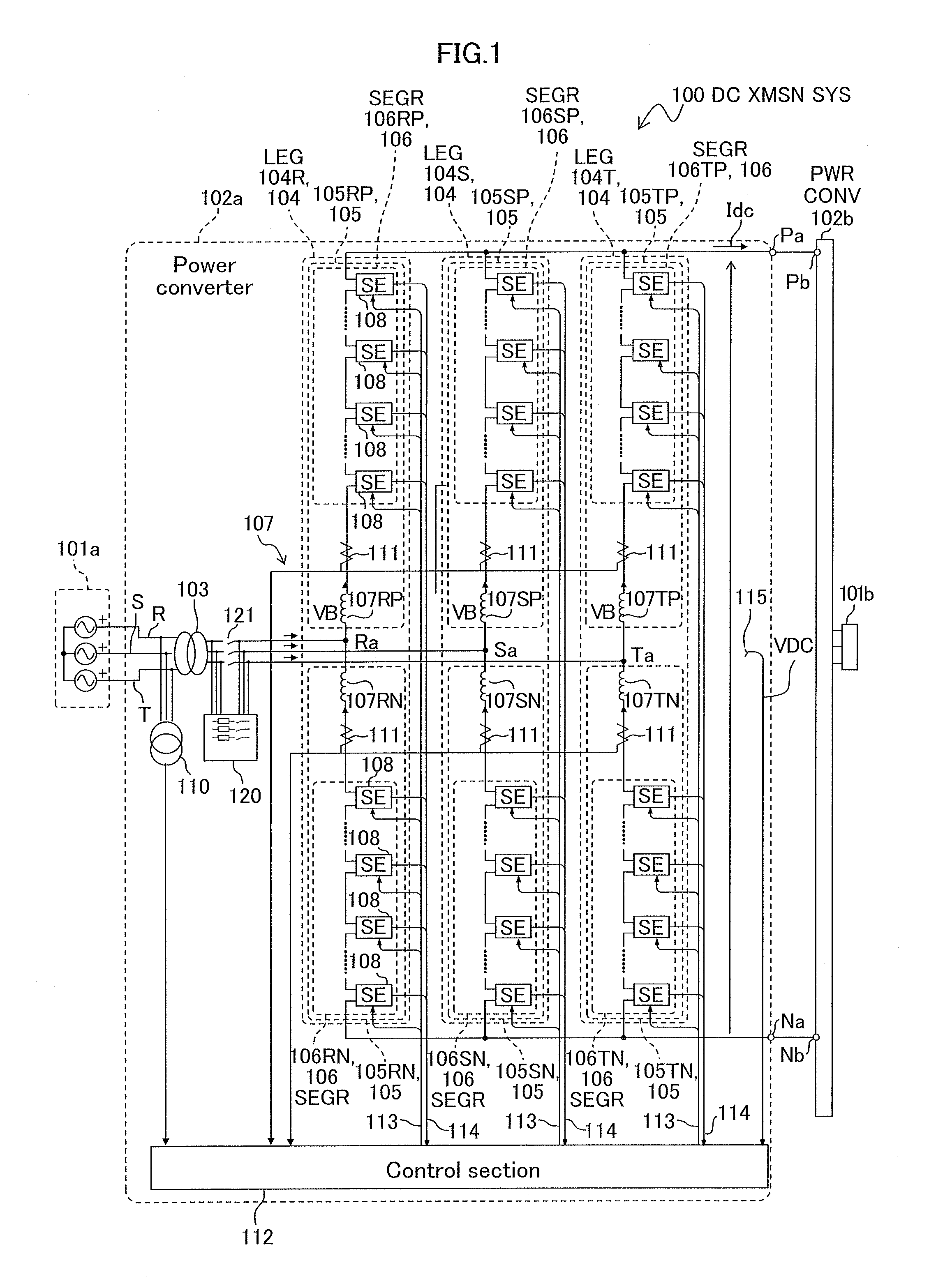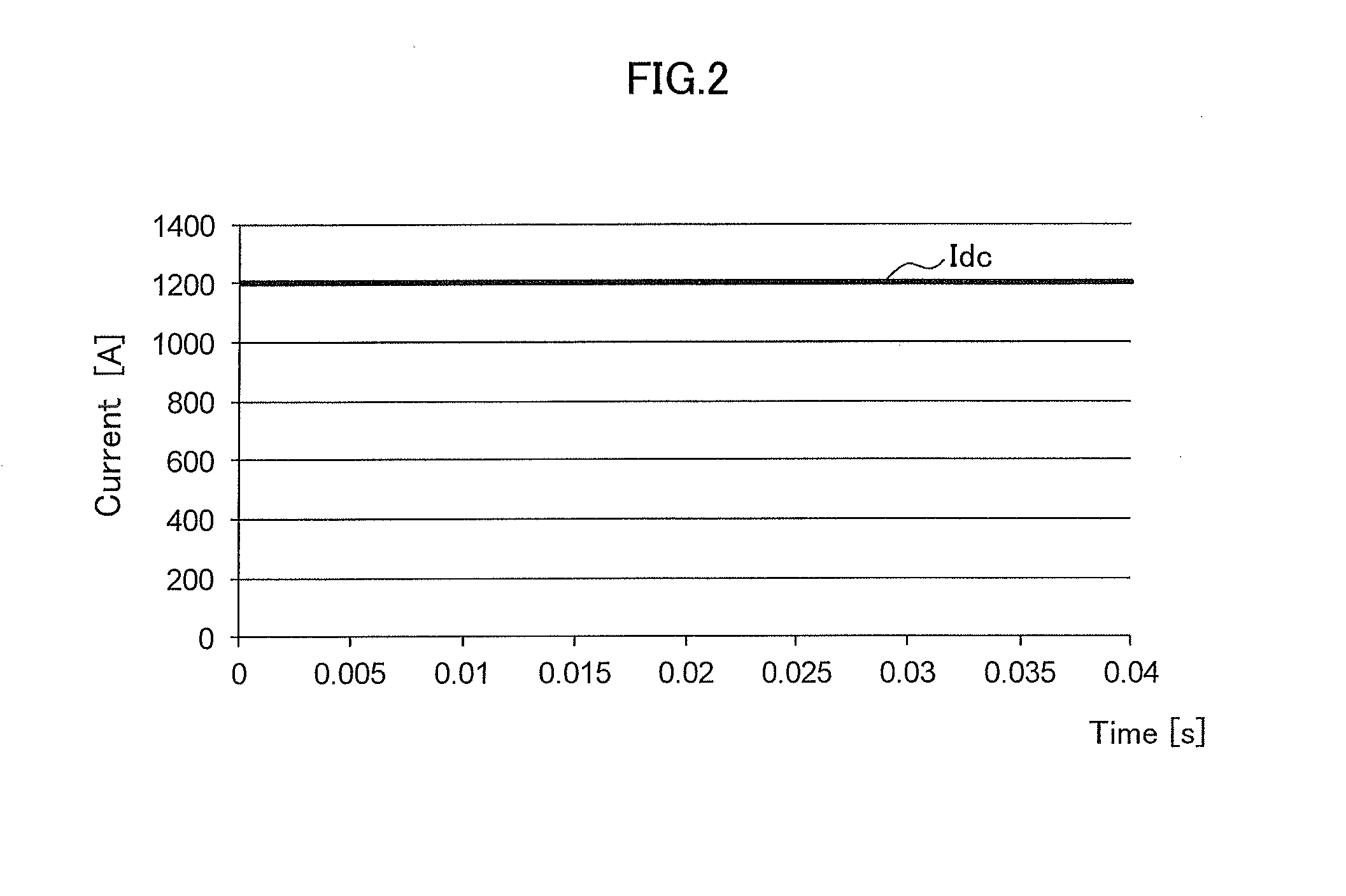Switching Element, Power Converter, Direct Current Transmission System, Current Control Device, Method of Controlling Power Converter, and Method of Controlling Current in Voltage Source Converter
a technology of power converter and current control device, which is applied in the direction of ac-ac conversion, dc-ac conversion without reversal, ac-ac conversion, etc., can solve the problems of insufficient flowing current, large loss of resistor, and insufficient supply of power
- Summary
- Abstract
- Description
- Claims
- Application Information
AI Technical Summary
Benefits of technology
Problems solved by technology
Method used
Image
Examples
first embodiment
Advantages of First Embodiment
[0313]The foregoing first embodiment has advantages as the following (A) to (E).
(A) The circuit for supplying current from the voltage applied to the capacitor 203 of a bi-directional chopper switching element 108 divides a DC voltage of several thousand volts into low voltages by the resistors R2 and R3. Accordingly, a power loss is generated by the resistor R2. Particularly, in a case of supplying a power of several watts, the power loss due to the resistor R2 becomes significant. In the first embodiment, a bi-directional chopper switching element 108 is capable of supplying power to the gate driver 205 through the current transformer 207 during operation of the power converter 102a. Thus, a power loss due to the resistor R2 can be reduced.
(B) A bi-directional chopper switching element 108 is configured such that the current transformer 207, which is power obtaining means, is serially connected to the capacitor 203, and a current flowing on the second...
second embodiment
Advantages of Second Embodiment
[0350]The foregoing second embodiment has advantages as the following (F) and (G).
(F) The q-axis second harmonic components of the circulating current IRb, ISb, and ITb have a frequency different from the frequency of the grid currents IR, IS, and IT. Accordingly, these q-axis second harmonic components can be easily controlled so as to make the circulating currents IRb, ISb, and ITb be at a desired level. Thus, a bi-directional chopper switching element 108 is capable of stably supplying a power source to itself from a current flowing in the current transformer 207 of the self-supply power source 206.
(G) The control section 112a in the second embodiment detects the second harmonic amplitudes of capacitor voltage VC by the second-harmonic-amplitude detector 316, detects the minimum value of the detected second harmonic amplitudes by the minimum value computing unit 317, and performs feedback control so that this minimum value converges to a predetermin...
third embodiment
Advantage of Third Embodiment
[0460]The foregoing third embodiment has an advantage in the following (H).
(H) As a reactor is unnecessary for the power converters 102c and 102d of the direct current transmission system 100b, the volume and the weight can be reduced, in addition to the advantages similar to those of the power converters 102a and 102b in the first and second embodiments.
(Configuration in Fourth Embodiment)
[0461]FIG. 29 is a schematic configuration diagram showing a direct current transmission system 100c in a fourth embodiment. The same reference symbols are assigned to the same elements as those of the direct current transmission system 100b in the third embodiment shown in FIG. 22.
[0462]The direct current transmission system 100c in the fourth embodiment is provided with a control device 150c that is different from the control device 150 (see FIG. 22) in the third embodiment. The control device 150c in the fourth embodiment is provided with a DC current regulating sec...
PUM
 Login to View More
Login to View More Abstract
Description
Claims
Application Information
 Login to View More
Login to View More - R&D
- Intellectual Property
- Life Sciences
- Materials
- Tech Scout
- Unparalleled Data Quality
- Higher Quality Content
- 60% Fewer Hallucinations
Browse by: Latest US Patents, China's latest patents, Technical Efficacy Thesaurus, Application Domain, Technology Topic, Popular Technical Reports.
© 2025 PatSnap. All rights reserved.Legal|Privacy policy|Modern Slavery Act Transparency Statement|Sitemap|About US| Contact US: help@patsnap.com



